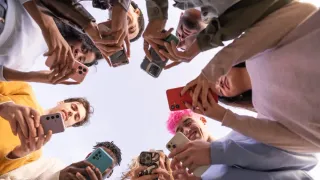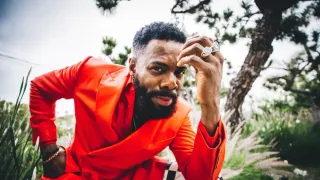
Oct 21
Wildflowering Takes Root: The Rise of Spontaneous, Authentic Dating
READ TIME: 4 MIN.
As fall 2025 unfolds, a fresh energy is blooming across dating scenes worldwide: the era of “wildflowering.” This fast-growing trend champions spontaneity, curiosity, and personal growth, striking a sharp contrast with the high-pressure, outcome-driven behaviors that have dominated online dating in recent years. Originating as a grassroots movement on TikTok and embraced by Gen Z, wildflowering is now influencing singles of all ages and identities, with LGBTQ+ communities at the forefront of its adoption and evolution .
Unlike older trends such as “cuffing season” or “situationships,” wildflowering is about more than just casual dating. According to relationship expert Shan Boodram, wildflowering is “dating curiously and spontaneously,” encouraging singles to step out of their comfort zones and connect with people who might not fit their typical “type” . The aim isn’t to amass a roster of dates, but to let connections form organically and without pressure, allowing individuals to discover more about themselves in the process .
This mindset shift is especially resonant in LGBTQ+ communities, where traditional dating scripts have often excluded or marginalized non-heteronormative identities. Sofie Roos, a bisexual sexologist and relationship therapist, explains: “Wildflowering is about having a fun yet relaxed approach where you focus on getting to know many people and let the feelings grow over time as you learn about yourself and try new things” .
The Basics:
- Intentional Exploration: Rather than seeking immediate commitment, participants in wildflowering embrace the journey, going on dates with a variety of people to clarify their desires, boundaries, and values .
- Non-judgmental Openness: Dating “just for the hell of it” is encouraged, so long as all parties are honest about their intentions. This open-mindedness can lead to unexpected connections and deeper self-knowledge .
- Self-Discovery: The process is less about finding “the one” and more about discovering one’s authentic self, independent of external validation .
- Spontaneity and Fun: With the pressure off, dating becomes playful and experimental. Many report that this approach relieves anxiety and makes dating enjoyable again .
For LGBTQ+ people, wildflowering offers a particularly affirming alternative to mainstream dating scripts. Angie Reyes, a relationship expert, notes that “wildflowering emphasizes the individual's need to prioritize their personal growth and happiness outside of a relationship” . This resonates with many queer and trans people who have often felt pressured to fit into heteronormative relationship models.
Moreover, experts suggest that wildflowering aligns with broader shifts in LGBTQ+ dating, where authenticity and fluidity are increasingly valued . For transgender and nonbinary people, who have historically faced exclusion on dating platforms and in traditional dating spaces, wildflowering’s emphasis on self-knowledge and low-pressure exploration can foster safer, more affirming experiences .
The seasonality of wildflowering is backed by data from dating apps such as Bumble. In 2024, 72% of UK singles reported plans to date more in spring, and the app saw a noticeable increase in both new members and activity from April to May . Over half (57%) of users felt more confident during this period, with many citing the psychological boost of longer days and warmer weather as a key motivator for romantic resets and new beginnings .
Chantelle Otten, Bumble’s sexologist, explains: “Spring naturally lifts our mood, energy, and desire to connect. ‘Wildflowering’ is about dating freely—with confidence, spontaneity, and zero pressure. It’s not just a cute term—it reflects the psychological shift that happens when we emerge from the winter slump and start saying yes to possibility” .
While wildflowering is in full bloom, several other trends are complementing or contrasting with it in 2025:
- Explorationships: Similar to wildflowering, this trend emphasizes open-ended romantic exploration without immediate exclusivity or labels .
- Pebbling: Inspired by the affectionate behavior of penguins, pebbling involves small, meaningful gestures that build intimacy over time, rather than grand declarations .
- Sledging and Banksying: In contrast, these toxic dating trends involve game-playing or emotional distancing, which experts caution against in favor of more authentic, open approaches like wildflowering .
As digital dating culture continues to evolve, wildflowering is being celebrated by daters, relationship professionals, and mental health advocates alike as a healing antidote to the burnout and cynicism that have often accompanied app-based romance . Its core values—freedom, curiosity, self-discovery, and authenticity—reflect a growing emphasis on mental wellness and consent, values particularly resonant for LGBTQ+ people after years of navigating exclusionary or high-pressure dating environments .
Relationship therapist Sofie Roos suggests that wildflowering is likely to endure well beyond its current viral moment: “Just as wildflowers thrive in a range of environments, those who embrace this trend seek love and connection with grace and authenticity” . For many, wildflowering is more than a dating trend—it’s a blueprint for approaching relationships of all kinds with openness and care.
With its emphasis on exploration and inclusion, wildflowering is poised to become a defining feature of dating culture in 2025 and beyond. As more singles—and couples—embrace this philosophy, the possibilities for love, friendship, and self-growth continue to flourish, offering hope and excitement for anyone ready to see where the season takes them.






